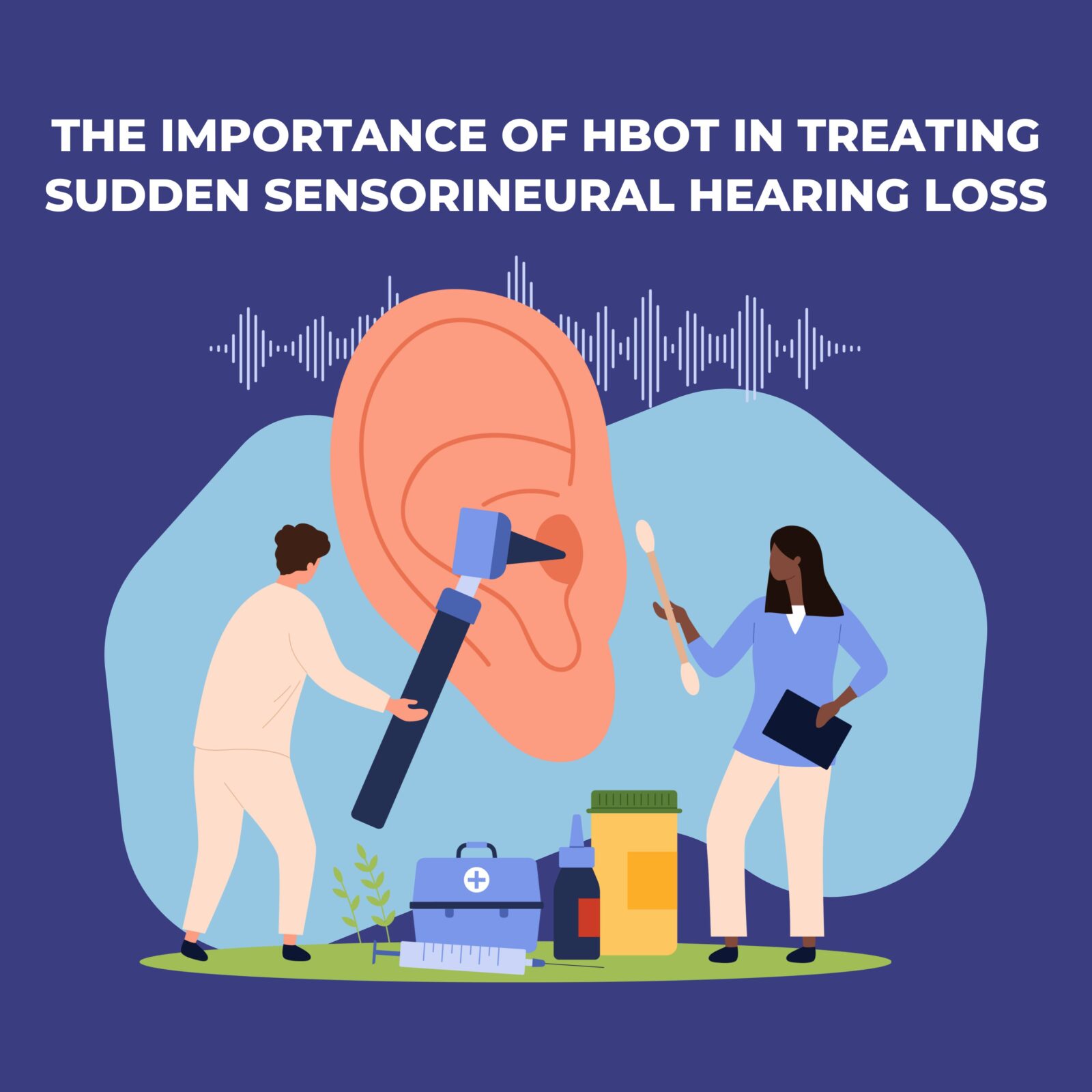
Hyperbaric Oxygen Therapy: The Gold Standard Treatment for Sudden Sensorineural Hearing Loss
Sudden Sensorineural Hearing Loss (SSNHL) is a condition that strikes unexpectedly, often without warning, causing a significant loss of hearing in one ear. The exact cause remains unknown in many cases, but it is thought to be related to factors such as viral infections, blood circulation problems, or inner ear trauma. For those experiencing SSNHL, time is of the essence in seeking treatment, as early intervention is crucial to improve the chances of recovery. One treatment that has emerged as a gold standard for SSNHL is Hyperbaric Oxygen Therapy (HBOT).
What is Sudden Sensorineural Hearing Loss?
SSNHL is a medical emergency that typically presents as a rapid and unexplained decline in hearing in one ear, occurring within 72 hours. The hearing loss is usually sensorineural, meaning it affects the inner ear or the nerve pathways to the brain. While the cause remains unclear for many individuals, potential triggers include viral infections, autoimmune diseases, trauma, and vascular issues. Without a clear diagnosis or immediate treatment, SSNHL can result in permanent hearing loss, making swift intervention essential.
Hyperbaric Oxygen Therapy: A Breakthrough Approach
Hyperbaric Oxygen Therapy involves breathing pure oxygen in a pressurized room or chamber. The high pressure allows the lungs to absorb more oxygen, which is then transported by the bloodstream to tissues throughout the body. This influx of oxygen helps to repair damaged cells, reduces inflammation, and promotes healing. HBOT has long been used to treat conditions like carbon monoxide poisoning, decompression sickness, and chronic wounds. More recently, it has been shown to be effective in treating SSNHL.
Why HBOT is Considered the Gold Standard for SSNHL
Several factors contribute to HBOT being considered the gold standard treatment for SSNHL. First, the therapy has the unique ability to promote oxygen delivery to the inner ear, an area that typically has limited blood flow. Since SSNHL may involve vascular issues that reduce blood supply to the inner ear, increased oxygenation can aid in cellular repair and regeneration. Studies suggest that HBOT can stimulate the production of growth factors and reduce swelling in the affected area, which can help restore hearing function.
Moreover, HBOT is most effective when administered early—ideally within the first 72 hours of symptom onset. Early intervention with HBOT has been linked to higher recovery rates and better outcomes for patients. The pressure from the hyperbaric chamber increases the solubility of oxygen in the blood, enabling it to reach tissues more effectively. This is particularly important in treating SSNHL, where quick restoration of oxygen flow is essential to prevent permanent damage.
Clinical Evidence Supporting HBOT for SSNHL
Numerous clinical studies and trials have demonstrated the positive impact of HBOT on patients with SSNHL. Research indicates that HBOT can significantly improve hearing recovery rates when combined with other treatments, such as corticosteroid therapy. In fact, some studies have shown that patients who received HBOT as an adjunct to conventional therapies had better outcomes than those who only received standard treatments. While the success rate can vary depending on the severity of the hearing loss and the timing of treatment, the results are promising.
Conclusion: A Hopeful Path to Recovery
For individuals suffering from Sudden Sensorineural Hearing Loss, Hyperbaric Oxygen Therapy offers hope. As a non-invasive treatment with minimal side effects and proven efficacy, HBOT has solidified its position as the gold standard in SSNHL care. When administered early, it can significantly improve the chances of hearing recovery and reduce the risk of permanent hearing loss. If you experience sudden hearing loss, it is vital to seek medical attention immediately and discuss the potential benefits of HBOT as part of your treatment plan.